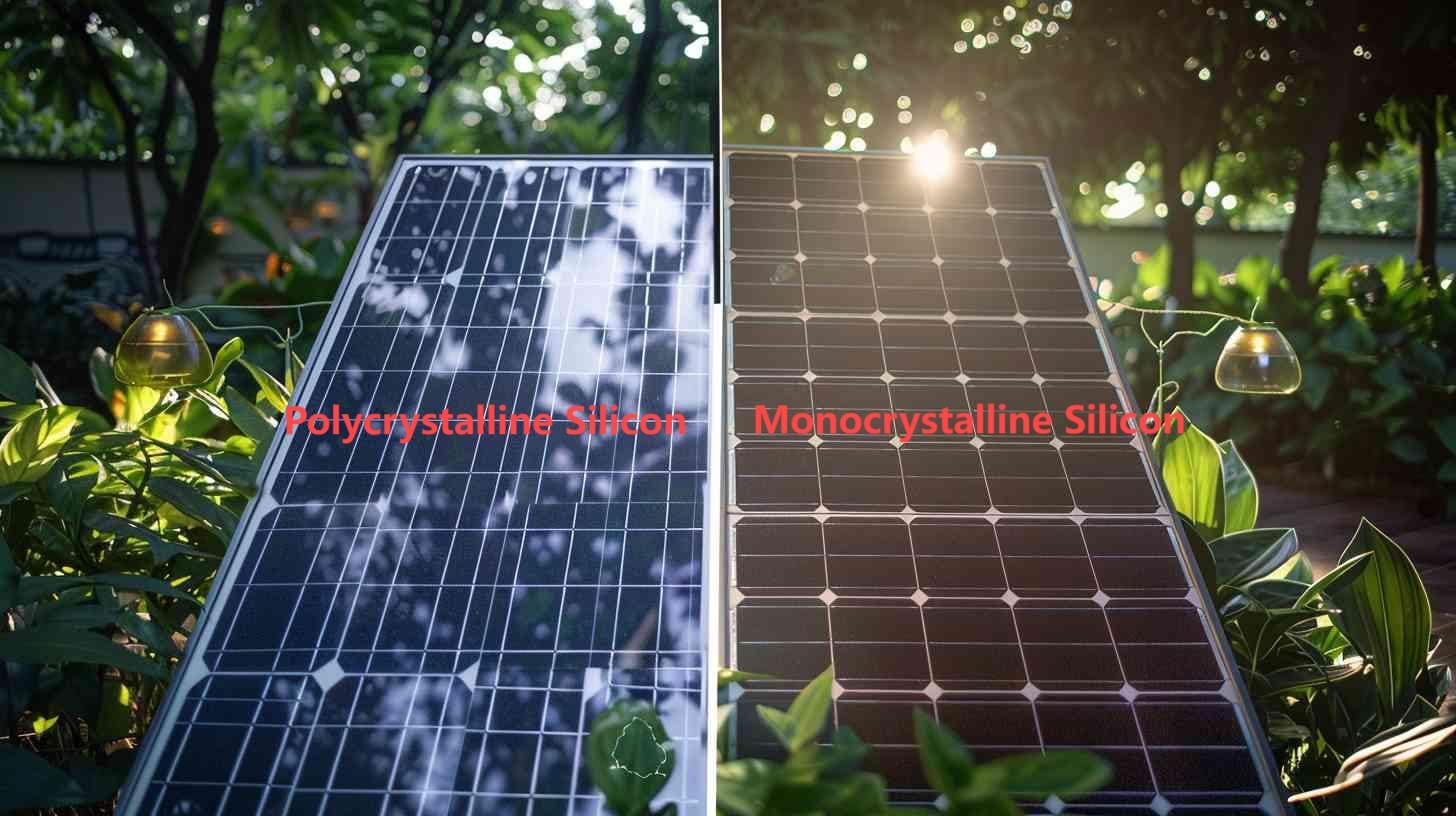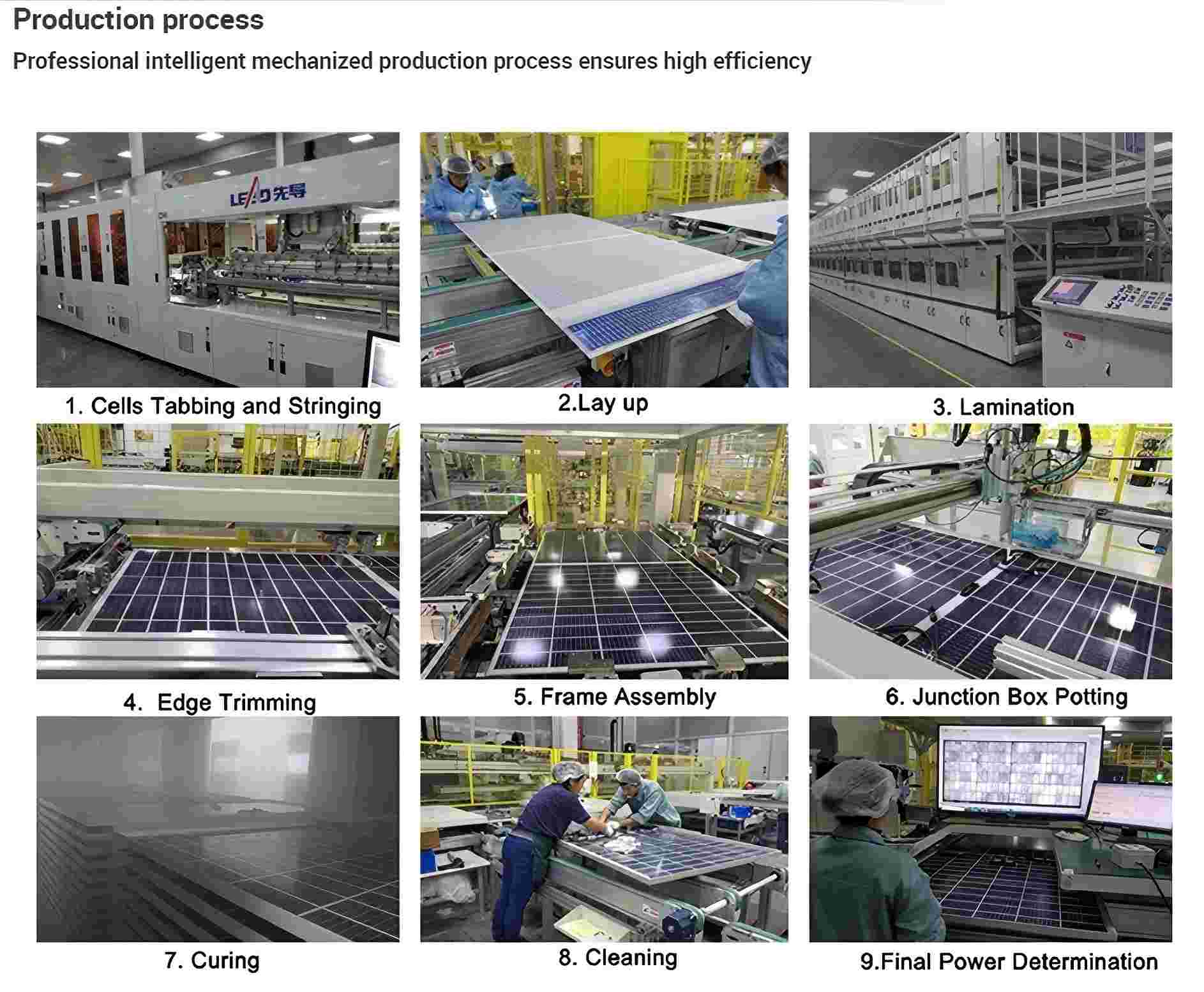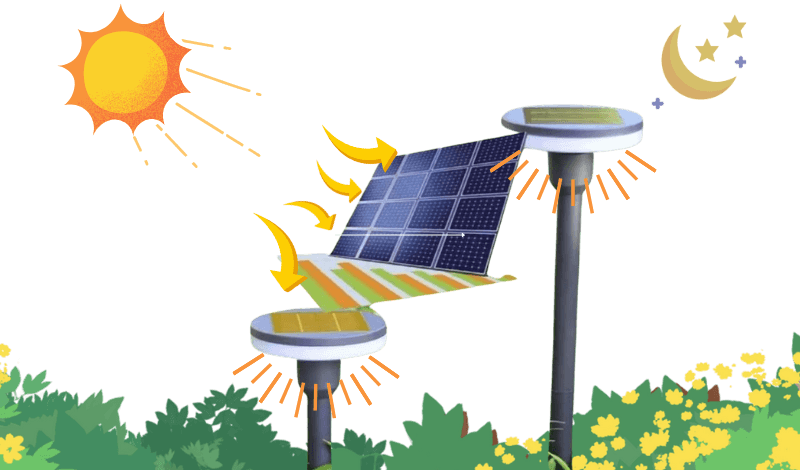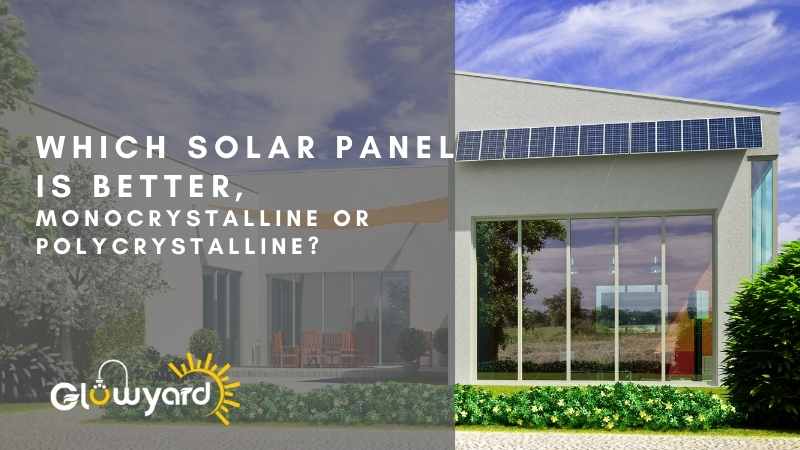Which solar panel is better, monocrystalline or polycrystalline panels?
I see many buyers who feel uncertain when choosing solar panels. They worry about costs and performance. They want a reliable choice, but all the options can seem overwhelming.
Monocrystalline panels are more efficient but more expensive. Polycrystalline panels cost less but have slightly lower efficiency. The right choice depends on your budget, space, and long-term goals.

I want to share my insight. Different usage scenarios call for different solutions. There is no single best option. The panel that suits your specific situation is the smart choice.
What are the disadvantages of monocrystalline solar panels?
I speak with many people who think monocrystalline panels are always superior. They often do not consider the drawbacks. They just see the high efficiency and assume it is perfect.
Monocrystalline panels cost more, especially for large-scale projects. They also lose efficiency in shaded conditions. Their manufacturing process is complex, which adds to the higher price tag.

I have used monocrystalline panels on different sites, especially when I wanted top performance in a small space. Yet I also noticed some pitfalls. The first disadvantage is cost. Monocrystalline panels have very pure silicon cells, which means more money must go into their production. This leads to higher prices for consumers or businesses. If you have an extensive installation, the cost can add up quickly. That might strain your budget, especially if you want to stay within certain financial limits.
Another disadvantage is how these panels react to shade. When even a small part of a monocrystalline panel is shaded, the efficiency can drop significantly. This situation can happen if you install panels near tall trees or other obstructions. It can also occur in areas with unpredictable weather patterns. Some advanced technologies, like bypass diodes or micro-inverters, can help reduce this efficiency loss. However, not everyone invests in these, which can make shade a larger problem than anticipated.
The manufacturing process is another point. It is intricate and demands precise control. The production lines involve carefully grown silicon ingots. That complexity helps deliver the panel’s top performance, but it requires expensive equipment and skilled labor. Over time, I have learned that careful planning is key for deciding if monocrystalline panels are worth the higher cost. If your budget or location does not support their top-tier requirements, polycrystalline or other solutions may make more sense.
How do I maximize my solar charge?
Many people install solar panels then forget about maintenance and optimization. That leads to poor performance. They want better energy yield but do not know the steps to take.
To increase solar charge, place panels under direct sunlight, clean them regularly, and use good batteries. Also, avoid shading and adjust the tilt angle for your region.

I have seen firsthand how small changes can dramatically improve solar output. One important factor is positioning. If you install panels at the wrong angle or direction, you will lose energy. It is best to face panels toward the path of the sun in your region. In most cases, this means facing them south in the Northern Hemisphere or north in the Southern Hemisphere. That positioning captures the strongest sunlight throughout the day.
Maintenance is another critical aspect. Dust or debris can settle on the surface of your panels. Even a thin layer of dirt will reduce the amount of light reaching the cells. I suggest setting up a simple cleaning schedule. Check the panels at least once a month. If you see visible dust or leaves, gently wipe the surface using water or a soft cloth. That small routine can extend the life of your system and keep output strong.
Also, consider your batteries. If you rely on poor battery technology, you will not store energy efficiently. This can lead to power shortages during low sunlight periods. High-quality batteries may cost more, but they preserve your harvested energy and supply power during peak demand. Equally important is avoiding shade. Sometimes a single shadow can impact the entire array’s performance. If your roof or yard has obstructions, see if you can trim back trees or adjust your layout. You can also explore micro-inverters, which help isolate each panel’s production. Finally, use the right tilt angle. In many places, people adjust the tilt by a few degrees for different seasons. That small change can yield more sunlight capture. Each step helps you get the most from your system, so you can see real savings on your energy bill.
Which lasts longer, monocrystalline or polycrystalline?
I get this question a lot from those wanting long-term value. They wonder if monocrystalline panels outlast polycrystalline ones enough to justify the cost.
Monocrystalline panels usually last longer. They can often perform well for 25 to 30 years. Polycrystalline panels can also last a long time, but slightly less on average.

I have worked with both types of panels. In my experience, monocrystalline panels do tend to have a longer average lifespan. They use a single-crystal silicon structure, which reduces defects in each cell. Fewer defects can mean less internal stress on the silicon. Over time, that translates to better performance and slower degradation. The cells maintain their efficiency more reliably. After years of operation, they still produce a high percentage of their original output, which can justify the extra expense at purchase.
Polycrystalline panels, on the other hand, use multiple silicon crystals in each cell. This simpler process keeps their cost lower, which can be attractive for large installations or for those on tighter budgets. The trade-off is a bit more heat tolerance variance. Over many years, slight imperfections in the crystalline structure can lead to faster performance decline. They still hold up for 20 to 25 years in many scenarios, which is not far behind monocrystalline panels. In that sense, both offer strong longevity, but monocrystalline can edge out the competition.
I also check warranties. Reputable manufacturers often attach warranties of up to one years for monocrystalline panels. Some even offer performance guarantees, such as 80% efficiency at the two-year mark. Polycrystalline panels have decent warranties, but they may not be as comprehensive. Still, if your project aims for mid-range performance or you have a tight budget, polycrystalline panels could last long enough to provide a good return. Overall, monocrystalline panels tend to have a longer life, though you must factor in the added investment required.
Conclusion
No single panel is perfect for everyone. My experience tells me that you should choose what fits your budget, space, and goals. The best panel is the one that meets your needs.
Are you looking for a Solar garden lights manufacturer?
At Glowyard, we’re committed to providing high-quality solar lighting solutions that deliver superior performance and longevity. We use the best battery technologies to ensure that our solar garden lights offer consistent brightness and reliability. For distributors, retailers, and homeowners, we’re here to support you with products that last and exceed expectations.
If you’re a outdoor lighting distributor, retailer or brand owner who is looking for a certified & trusted solar garden lights supplier, feel free to reach out. We offer:
- Free samples for qualified buyers
- OEM & ODM for solar garden lights
- Full pre-shipment QC and warranty support
📩 Interested in learning more or placing an order?
Visit www.glowyard.com or email us at [email protected] for more details!

Glowyard new solar garden light product launch with creative outdoor designs













